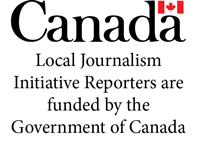It promises to be a long, hot summer in more ways than one, as divisiveness grows on both sides of the border. Many of those divisions have the potential to explode into violence.
South of the border, the United States Supreme Court overturned Roe v. Wade, the 1973 landmark decision that made a woman’s decision to have an abortion a constitutional right. Some of the more conservative states have already outlawed abortions, while other states have gone in the opposite direction and designated themselves safe havens for women seeking abortions.
Some employers have guaranteed their female staff financial support to go “camping” in a state that allows “camping.” Meanwhile, protests continue.
Many people on this side of the 49th are wondering how the ruling will affect us – especially if other laws that have been thorns in the side of the ultra-conservative far right suffer the same fate, for example, those allowing same-sex marriage. Rights recently acquired by the gender-diverse seem to be the next target.
Whether one agrees or disagrees with the American decision, it is unnerving. Even more unnerving are the euphemisms that have emerged to avoid use of the medical term. It brings to mind such bizarre things as upper-crust Victorians putting ruffled coverings on piano legs, to avoid any mention of an anatomical appendage that might shock polite company. We must keep in mind that on the less-polite side of the street in Victorian England, prostitution including that of children was rampant. So were backyard abortions that killed many desperate women.
The overturning of Roe v. Wade makes people on both sides of the border question rights we have taken for granted – rights that can disappear with a few strokes of a pen. And it makes us worry about an already extreme right wing that is shifting even further right.
We are seeing it in this country, too. Canadians have the uncomfortable knowledge that what happens south of the border tends to head north.
Witness what happened in Ottawa on Canada Day. The same group that took over and occupied our national capital for almost a month decided to come back, but this time the city was prepared with metal detectors, an increased police presence, new no-parking zones and a zero-tolerance attitude toward those in violation of the rules. The measures served their purpose but they also impinged on everyone’s right to freely gather on Parliament Hill to celebrate the joy of being Canadian, something we have not been able to do for two years.
There is a certain irony in the fact that a group claiming to espouse freedom spent February denying Ottawa citizens their freedom in their own neighbourhoods, and decided to do it again on Canada Day.
There is even more irony in the fact their protest is about the very thing that has allowed a return to normal in this country – vaccination – which the government never mandated.
Future generations may very well end up wondering how a disease prevention measure in the middle of a pandemic became such a polarizing issue. Most Canadians welcomed the protection offered by the vaccine, some, admittedly, with a certain nervousness. While some people quietly decided not to get vaccinated, a substantial group became vocal and violent about it, viewing the whole thing into a government conspiracy that violated their rights – so they decided to invade Ottawa. It will make an interesting case study for sociologists a century from now.
We are just beginning to emerge from a two-year pandemic that wreaked havoc on the entire world. Supply lines are shaky, inflation is scaring the living daylights out of us – almost as much as global climate change. The cost of housing is putting more people at risk of homelessness every day and health care is in chaos.
These will require action from all sides, and that will take consensus, not division. It will be extremely difficult to “meet in the middle” and deal with problems, when the proverbial “middle” seems to be disappearing.



